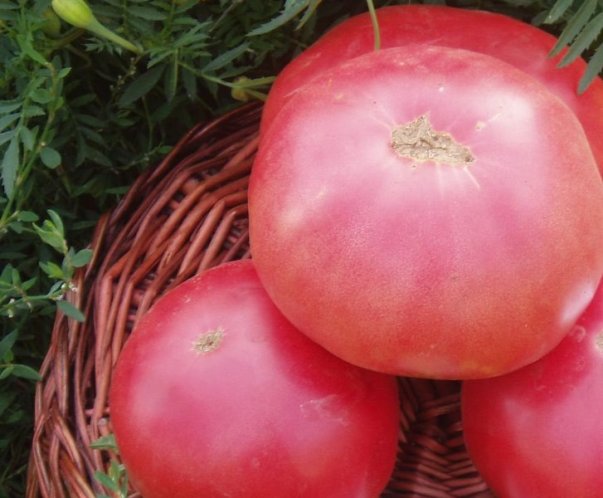
Pink tomatoes are recognized favorites among gardeners, as it is believed that such tomatoes are an order of magnitude higher than red ones. This fact is confirmed by the popularity of the Pink Elephant variety, combining excellent taste and large fruit sizes. Description of the variety, as well as features of its agricultural technology will be set out in the article.
Content
Giant in the garden
The variety is distinguished by the power of the bush, sprawling side shoots. It grows to 1.4-1.6 meters, so the installation of supports and garter are required.
It belongs to the group of semi-determinant tomatoes, the stem has a growth point, and the plant needs pinching. Medium affinity, medium-sized leaf blades, potato type. Coloring is deep green.
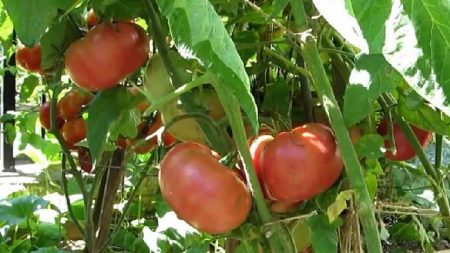
The number of brushes is different, the turning occurs at any time, so it is advisable to lead the bush in two stems.
The first brush appears above the 7th leaf, then inflorescences are formed through two sheets. In each inflorescence, 3-4 fruits are formed.
Fleshy tomatoes, large, ripening - raspberry with crimson tint. Weight on average - 300-500 grams, also the fruits, subject to certain agricultural practices, grow to 800-1000 grams. The shape of the tomatoes is round, slightly flat, with ribbing in the area of the stem. The skin is thin, but dense, the flesh is very juicy, sweet, with a small number of seeds.

According to the reviews of those who planted this tomato, the taste of pink fruits is excellent, there is no acidity. The main purpose is salads, fresh consumption. Such tomatoes are suitable for cooking lecho, preservation with slices. In marinades, cut fruits do not lose their shape, retain their excellent taste. They make juice, sauces, pasta from pink tomatoes, but not everyone likes the taste of tomato products that is too sweet.
The shelf life of such large tomatoes is low, they are of little use for transportation.
According to the ripening period - medium early tomato, the fruits can be removed after 113-115 days from the moment of emergence of seedlings.
Advantages and disadvantages
Included in the State Register of Varieties of the Russian Federation in 1998, a tomato with the interesting name Pink Elephant is successfully grown in various regions of the country. He is appreciated for a number of positive qualities:
- great taste and sweetness of tomatoes;
- high commercial properties;
- large-fruited;
- the possibility of growing in beds, in greenhouses;
- medium early ripening (important for regions with harsh climates);
- resistance to major diseases (late blight, fusariosis and a number of others);
- the variety is slightly affected by pests, which greatly simplifies maintenance.
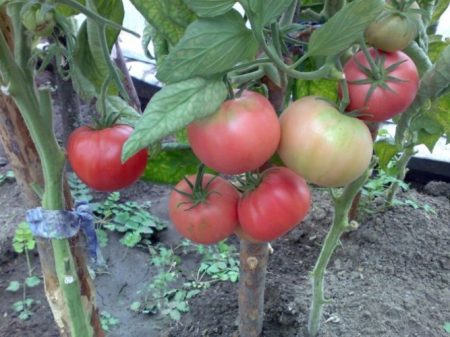
At the same time, some disadvantages of large-fruited tomato must be taken into account:
- average productivity (5-8 kg per square meter);
- exactingness to lighting, enhanced nutrition;
- the need for mandatory formation of a bush, pinching;
- the variety is not suitable for storage, the fruits must be immediately used in food or allowed for processing.
Whether it is considered flaws or attributed to the characteristics of the variety, each gardener decides for himself. But in general, the benefits "outweigh", which explains the popularity of this variety.
Gardeners reviews on tomato Pink elephant
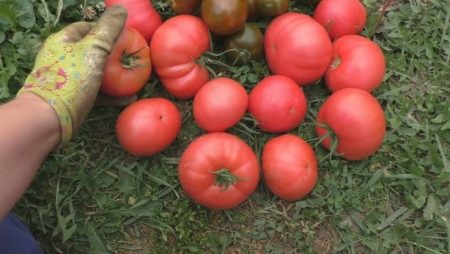
Zinaida, Perm Territory
I have been growing tomatoes for three years in a row. Pink elephant. I took seeds from Aelita, now I use mine. On a bag of photos with a very bright pink tomato, but in my color it turns paler
Otherwise, everything, as in the description - the yield, although average, is quite normal for us, the taste is excellent, and the weight is 400 grams. There are fewer fruits, but basically that kind of weight. They lie poorly, so immediately use salads. On the cut - sugar, sourness is felt, but very weak.
Elena, Moscow Region
I really like the Pink Elephant variety, I forgive him for not very large productivity and big-leaf bush. Very powerful it grows in my greenhouse. Unpretentious, now I always take my own seeds.
I plant five bushes for salads and for treating relatives and friends. Tomatoes weighing 35,420 grams. I usually lead in two stems. I don’t fertilize anything special, only ash and organic matter (which is found in the season).
Tatyana, Uglich
I plant a pink elephant on ridges, I always tie up a bush (wooden stakes are prepared). I have a lot of this tomato, up to 20 bushes. Crops are average, but I put up with it, due to the number of bushes we take. Very tasty tomatoes, for me - the best. Pink honey is similar, but for me it is freshish, but the Elephant is just right. I took seeds from different companies, there was no re-grading. This year I prepared my own, I will try.
Features of growing tomato Pink elephant
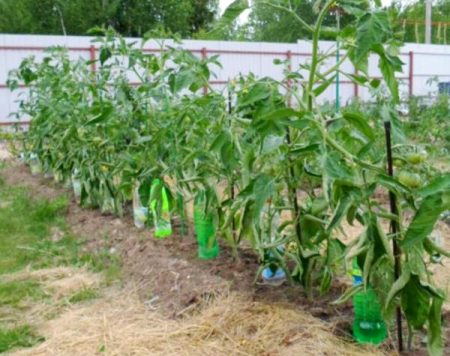
The agricultural technology of this tomato variety is standard, but some subtleties need to be known. For example, those who want to get larger fruits will have to deal with the formation of brushes, carefully consider the schedule of fertilizing and watering.
Growing seedlings
Sowing seeds for seedlings - March, taking into account the fact that in May (days are selected based on weather conditions and climate), the tomatoes will be planted in a permanent place.
Seedlings are provided with comfortable conditions for growth:
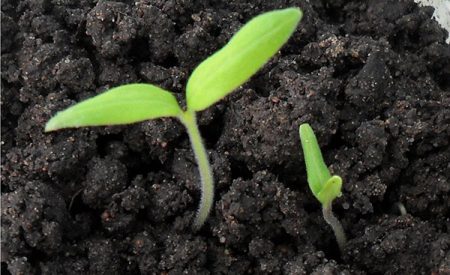
- optimal temperature conditions (+ 22ºC ... + 24ºC);
- good lighting;
- nutrition (after a picking, 1-2 feeding is carried out);
- moderate watering.
So that the seedlings are not hit by a black leg, water the tomatoes only under the root with warm water, avoiding excess moisture. Several crystals of potassium permanganate are added to the water.
Hardening is a mandatory procedure for seedlings, which allows plants to adapt faster after planting to new conditions. Tomatoes are taken outside (weather permitting), leaving them there first for 15-20 minutes, then - all day until the evening.
Tomato planting
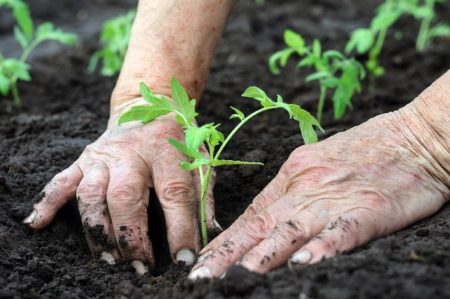
In all regions except the south, the pink elephant is recommended to be cultivated in a greenhouse. But middle gardeners speak of a successful experience in cultivating this tomato in the beds, noting that the fruits in this case are much sweeter and tastier.
The landing dates are May or early June. Powerful bushes require space, so the planting scheme is 2-3 plants per square meter. Immediately in the greenhouse for supports, trellises are prepared, stakes are placed on the beds.
Care: basic techniques
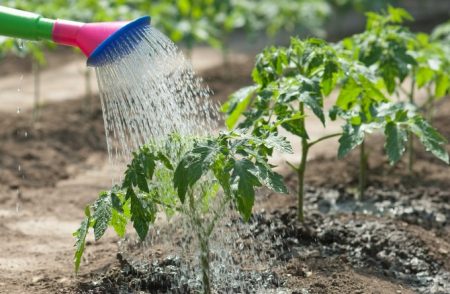
To get a good harvest you need:
- plentiful, rare watering;
- full feeding;
- removal of stepsons;
- the formation of a bush of tomato;
- conducting preventive treatments against various infections and protecting against insects.
Most often, this variety leaves one trunk, removing all side shoots. Suitable for him and growing in two stems, when additionally left a powerful stepson under the first inflorescence. All other shoots are removed, the leaves at the bottom of the stem are also removed. The pink elephant is stepsoned in the morning to avoid infection.
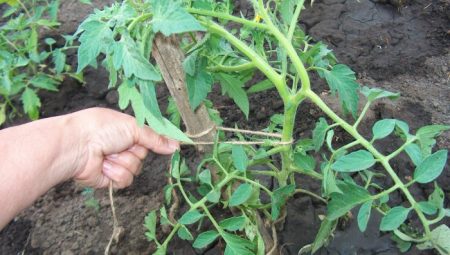
Tie up the stem, branches, during the fruiting period - flower brushes. The weight of the fruits is large, so there is a risk that the shoots will break, so the supports are also installed under clusters of tomatoes.
It is impossible to get large fleshy fruits without top dressing. Typically, in the season, the pink elephant tomato is fed at least 3-4 times, for which they use:
- organic matter (diluted mullein, bird droppings) - 18-20 days after planting;
- at the beginning of flowering - organic matter and wood ash;
- when ovary formation begins (superphosphate, wood ash or complex fertilizers);
- during fruiting (superphosphate, potassium sulfate).
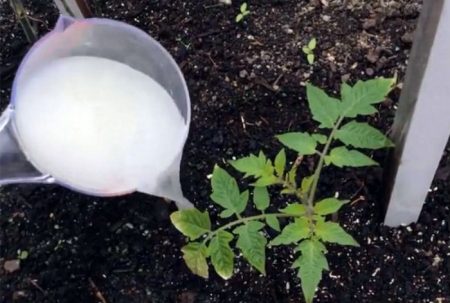
Watering this tomato gives excellent results with yeast infusion, green “cocktails” (fermented herb infusion), and humates. As a complex fertilizer, nitrophos is used.
After watering - necessarily loosening the soil around the bushes, airing (if tomatoes are grown in a greenhouse). Loosening can be replaced by mulching the soil, which will provide optimal indicators of soil moisture, avoid overdrying, or vice versa, overmoistening.
What to use for mulch? Fit:
- hay;
- straw;
- grass mowed and slightly “sunken” in the sun;
- sawdust (preferably scalded with boiling water);
- peat or rotted compost.
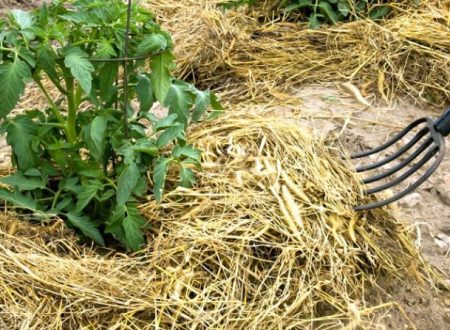
Tomatoes are rarely watered, but abundantly, carefully soaking the upper layers of the soil. Water should be warm, from wells, lakes, ponds or wells - it does not matter, but it is necessary to stand and heat.
Watering on the leaves is not allowed, which leads to increased humidity and the appearance of possible infections.
Disease resistant Pink elephant is resistant, but general rules for growing tomatoes are required. Recommendations:
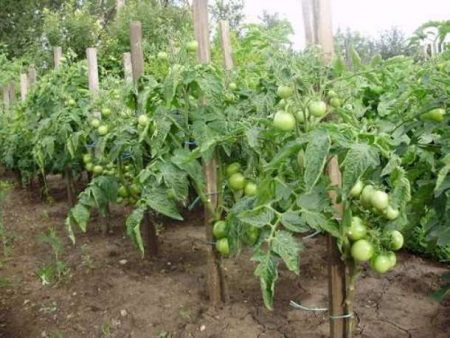
- to plant plants exactly according to the scheme, avoiding the dense plantings;
- remove all plant debris from the site, dig the soil deep in the fall;
- avoid planting tomatoes next to their crops (e.g. potatoes);
- spray the bushes with infusions of garlic, whey, ash;
- use Bordeaux liquid for processing (1%), the drug Fitosporin;
- do not exceed the dose of fertilizers when feeding.
Take off the fruits as soon as they reach the size and weight corresponding to the varietal characteristics. It is not necessary to wait for the ripening of tomatoes on the bushes; they will ripen at home. But here we must take into account that tomatoes ripened on the branches are tastier, and let the yield be slightly lower, but you will get a very high-quality product.
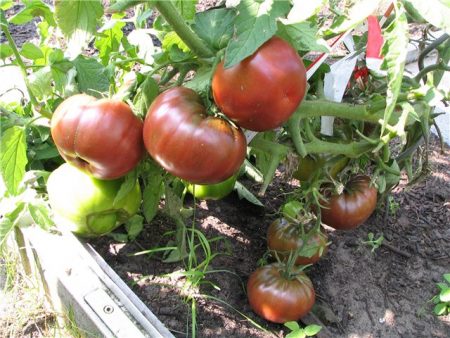
After harvesting, the fruits of the Pink Elephant are immediately used for food or for processing.
Variety Pink elephant is good in the taste of large-fruited fruits and is considered one of the best salad tomatoes.




 Low-growing tomatoes, without pinching: 5 of the most delicious varieties
Low-growing tomatoes, without pinching: 5 of the most delicious varieties Why tomato seedlings grow poorly
Why tomato seedlings grow poorly We grow a tomato in a shell
We grow a tomato in a shell Growing tomatoes without watering according to the method of Kazarin
Growing tomatoes without watering according to the method of Kazarin